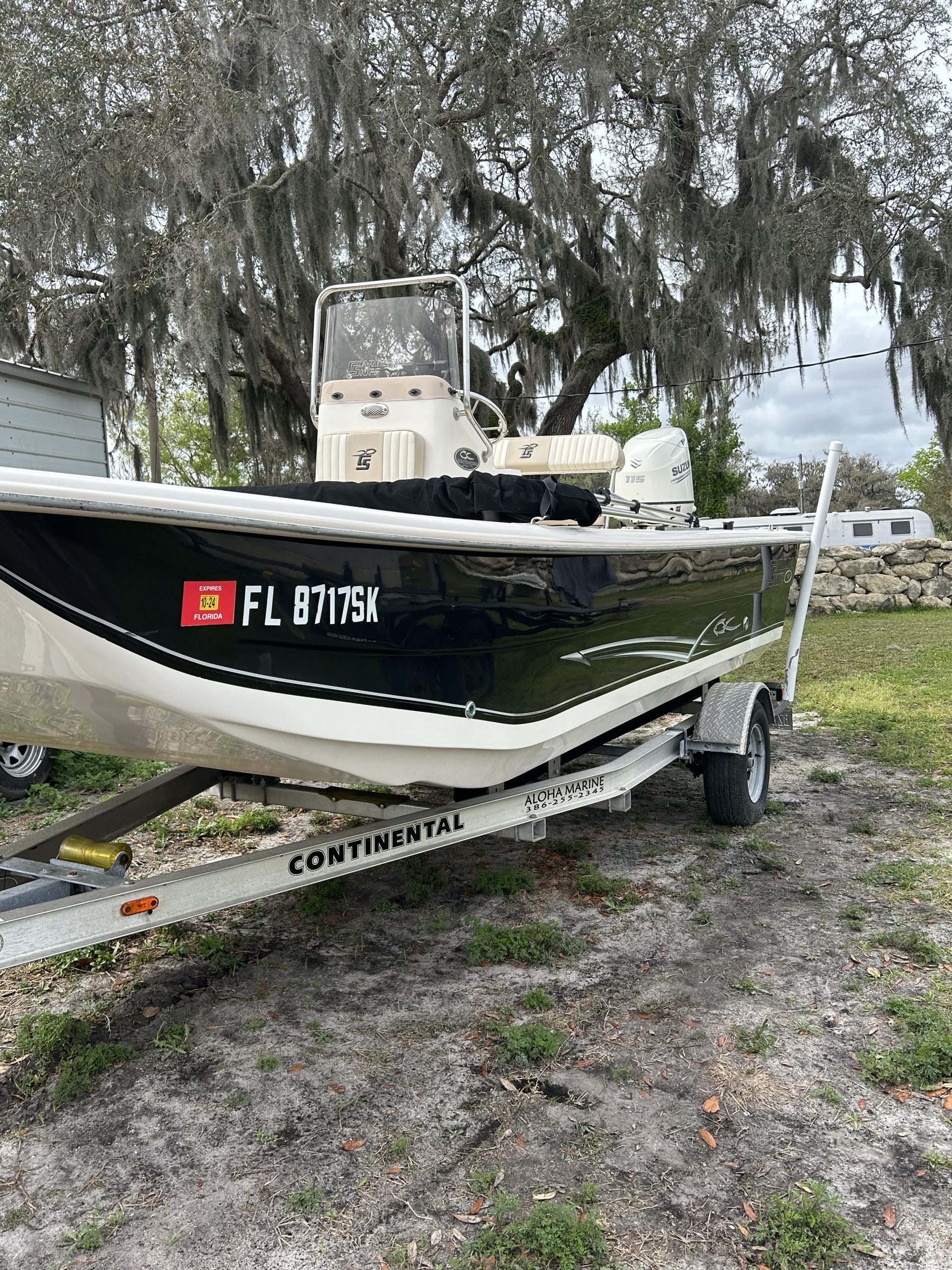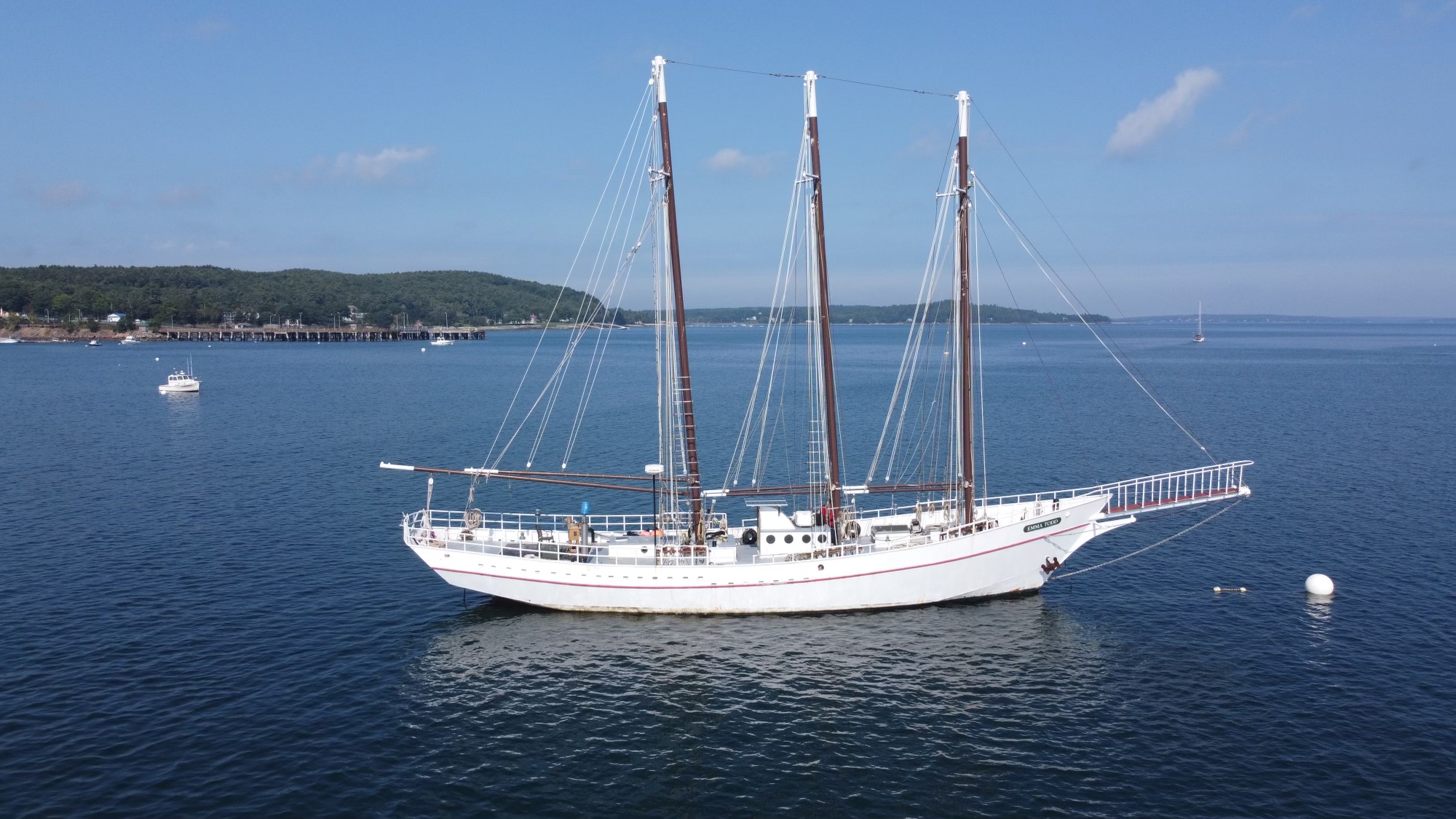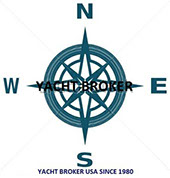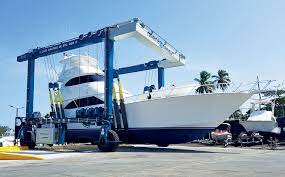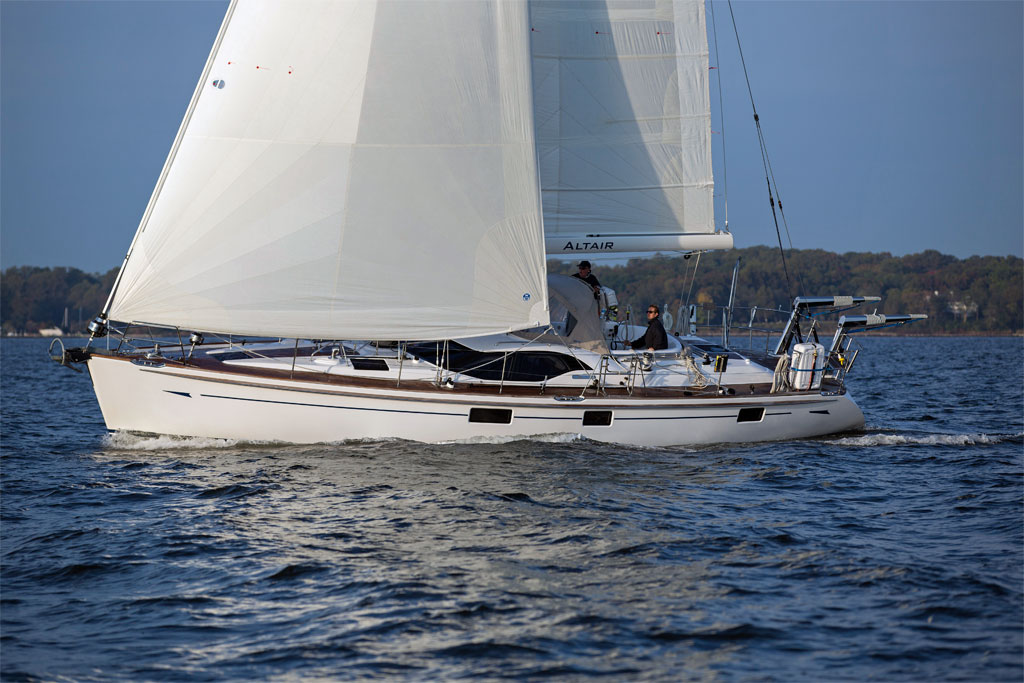
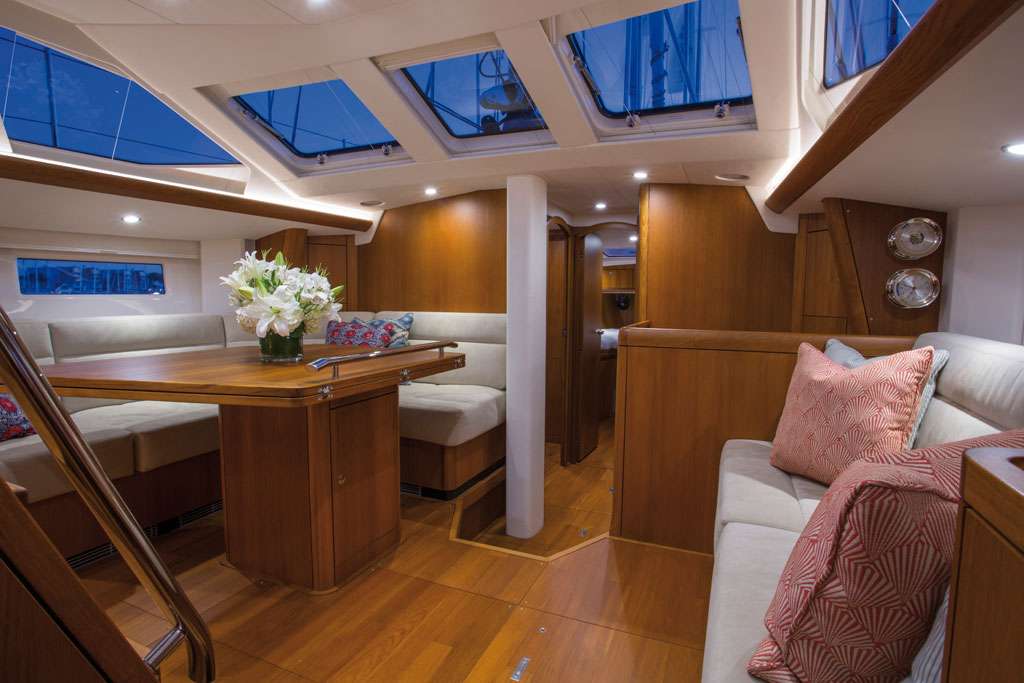
Oyster 475
Description
Oyster 475
An entry-level world cruiser from a respected British builder
Though it has now been eight years since company-founder Richard Matthews sold off Oyster Yachts, the brand has worked hard to sustain the intense owner-centric culture he created there. Sailors are attracted to these boats as much for the exclusive social scene that has grown up around them which includes, among other things, Oyster-only round-the-world rallies as for the quality of their design and construction.
Though its line of boats has grown dramatically over the years and now runs up to superyacht-sized vessels that have reached up to 125ft in length, Oyster has also continued tending to its “entry-level boats. Case in point: the new Oyster 475, now the smallest boat in the range, which has been adapted and upgraded from its predecessor, the successful Oyster 46.
Design & Construction
The molds for this new boat are largely the same as those used for the Oyster 46, with the extra length coming from a separate transom piece that is bonded onto the hull. Otherwise, the boat construction is straightforward and rather conservative. The hull is solid fiberglass laminate with a skin layer of vinylester resin to resist osmotic blistering. The structure is strengthened in its bilges with a web of stringers and floors. The glass deck, topped with quarter-sawn teak planks, is cored with balsa wood, except in high-load areas where a plywood core is interposed.
The stock specifications are for either a shoal or deep-draft keel with a single rudder on a full-length skeg. A super-shoal version that boasts a centerboard and twin rudders, allowing the boat to be grounded if desired, is also available.
On Deck
The extra length in the stern of the 475 has been put to good use, so that the rear deck and transom breathe more easily than on the 46, with proper steps rather than a ladder leading down to the transom skirt. There is also a voluminous aft lazarette that will swallow all manner of gear, plus a dedicated liferaft mount incorporated into the aft pulpit structure. The backstay is split so that access to the transom is unobstructed.
The center cockpit is at the heart of things, with low coamings that make it easy to climb in and out. Some may find these a bit too low to provide proper back support, but I suspect most will be comfortable. The Lewmar cockpit winches, a pair of smaller ones to manage the mainsheet behind the helm, and a pair of larger primaries for handling headsails, are actually on a shelf just outside the coaming top. These can be controlled from within the cockpit, but are more comfortably managed from the side-decks.
Most of the lines coming off the mast are led under the coachroof to a pair of winches on either side of the companionway. On our test boat, hull #2, the halyards were left at the mast with winches to manage them, and there was a nice set of granny bars to keep you secure while doing so. Otherwise, the deck is a nice mix of the traditional (two pairs of dorade vents) and the modern (sleek flush hatches).
The joinery is modern looking, but still comfortingly substantial
Accommodations
For those who have tired of the ultra-chic minimalist accommodations found on many Euro-yachts these days, the interior of the Oyster 475 will come as a welcome relief. The joinery, in the best Oyster tradition, is both substantial and quite solid, and though there are many modern touches, the overall feeling is a secure sea-going vessel. One key feature here is the generous old-style nav station to starboard, which boasts a large chart desk, a comfortable dedicated seat, and oodles of room for mounting electronics.
The saloon area is slightly raised, and though it purports to be a deck saloon, it is not quite high enough for folks to see out the expansive windows while seated at the dinette table. The table itself is huge and folds out to service the settees on both sides. In the standard layout, there are several guest berths (two over-and-under singles and a double V-berth) forward of the saloon and also a forward head. An alternative layout offers just one large stateroom forward with a generous Pullman double berth.
Moving aft youll find a spacious in-line galley to port that leads into the full-breadth owner stateroom. The galley on our test boat featured a huge front-loading Frigo refrigerator, a smaller top-loading fridge/freezer unit, and large Ocean Chef stove and oven with a four-burner range. The stateroom, meanwhile, is palatial for a boat this size, with full headroom, a large island double berth and an ensuite head with separate shower.
Under Sail
The 475 comes standard with a Seld©n masthead sloop rig supporting a slab-reefed full-batten mainsail and full-size genoa by Dolphin Sails. On our test boat, North Sails had been substituted, and the furling mainsail stowed away inside a Leisure Furl boom. There was also an inner forestay with a staysail, to be flown in lieu of the genoa in strong conditions, and a dedicated trysail track on the mast, which on reflection is a nice feature to have on any boat with a furling main.
We sailed the boat in a light 8 to 10-knot true breeze on Chesapeake Bay in flat water. The helm, a cable-driven Lewmar system, did not provide much feedback in these soft conditions, but I assume with a boat this hefty it would snap to life in a stronger wind.
Sailing on the wind the boat was more weatherly than I expected. In an apparent breeze that built to 12 knots, we were fully powered up at a 35-degree apparent wind angle and made 5.7 knots. Our speed improved to 6 knots when we bore away to a 50-degree angle. Bearing away fully to 120 degrees it lapsed to just 4.6 knots, in an apparent breeze of 6 knots, and we wished we had some proper downwind sails to spice things up a bit.
Under Power
The 75hp Yanmar diesel on our test boat was turning a three-bladed Brunton Varifold prop and developed good speed when we managed the boat under power. At a cruising setting of 2,300 rpm we made 6.2 knots, and when we put the hammer all the way down to 3,800 rpm we shot up to 8.5. I was surprised at how quickly the folding prop bit the water when I shifted into reverse. Our test boat, with an optional shaft drive, was easy to control, backing up with some predictable prop walk to starboard.
Conclusion
This is what I like to call a modern conservative vessel. With its solid build and quality finish, this is a boat any cruising sailor will feel safe aboard and be proud of. It will provide not only an entr©e into the exclusive club of Oyster owners but also take you pretty much anywhere in the world both comfortably and quickly.
oysteryachts.com
LOA 48ft 7in
LWL 40ft 7in
Beam 14ft 6in
Draft 5ft 9in (shoal); 7ft 1in (standard)
Displacement 36,900lb (standard keel)
Engine 75hp Yanmar with saildrive (shaft drive optional)
Fuel (GAL) 165
Water (GAL) 143
Ratio BALLAST RATIO 32 SA/D RATIO 17 D/L RATIO 258
Designer Rob Humphreys
Builder Oyster Yachts, Southampton, UK
U.S. Distributor Oyster USA, Newport, RI, 401-846-7400
Ballast 11,905lb
SAIL AREA 1,193ft2 (150% foretriangle)
AIR DRAFT 62ft 5in
PRICE at time of publication $975,000 (sailaway)
Featured Listings
More from Boat Listings
You may also like...
Popular Boat Brands
- Albin
- Azimut
- Bayliner
- Beneteau
- Bertram
- Boston Whaler
- C&C
- Cape Dory
- Carver
- Catalina
- Cheoy Lee
- Chris Craft
- Contender
- Formula
- Grady-White
- Grand Banks
- Gulfstar
- Hatteras
- Hinckley
- Hunter
- J/Boats
- Jeanneau
- Lagoon
- Luhrs
- Mainship
- Morgan
- Nordhavn
- Ocean Alexander
- Pearson
- Pursuit
- Regal
- Sabre
- Sea Ray
- Silverton
- Sunseeker
- Tartan
- Tiara
- Viking
- Wellcraft
BoatNation.com is a member of the following associations:
- International Marine Association ®
- Marine Industries Association of South FL
- International Yacht Brokers Association

